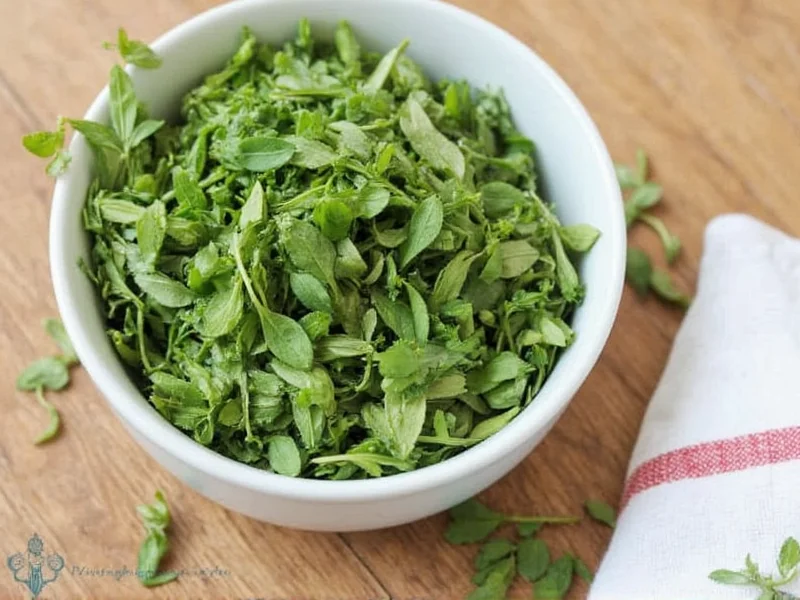Running out of a specific herb while cooking doesn't have to ruin your meal. Savory herb substitutes can save your dish when you're missing a key ingredient, but choosing the right alternative requires understanding flavor profiles and substitution ratios. This comprehensive guide provides practical solutions for common herb shortages, helping you maintain flavor integrity in your cooking.
Understanding Herb Flavor Profiles for Effective Substitution
Successful herb substitution isn't just about swapping one green for another—it requires understanding flavor profiles. Savory herbs fall into distinct flavor categories that determine suitable replacements:
- Earthy herbs (rosemary, thyme, sage) work well in roasted meats and hearty dishes
- Bright herbs (basil, cilantro, parsley) enhance fresh salads and light dishes
- Anise-flavored herbs (tarragon, fennel fronds) complement fish and delicate sauces
- Peppery herbs (oregano, marjoram) add depth to tomato-based dishes
When selecting a substitute, prioritize herbs within the same flavor category for the most seamless transition. Consider both the dominant flavor notes and intensity level—some herbs like rosemary are potent, while others like chervil are more delicate.
Comprehensive Savory Herb Substitution Guide
Below is a detailed reference for common savory herb substitutions, including recommended ratios and best culinary applications:
| Original Herb | Best Substitutes | Substitution Ratio | Best For |
|---|---|---|---|
| Rosemary | Thyme, sage, or a pinch of dried lavender | 1:1 fresh, 1:1 dried | Roasted meats, potatoes, focaccia |
| Thyme | Oregano, marjoram, or savory | 1:1 fresh, 1:1 dried | Stews, braises, vegetable dishes |
| Basil | Mint, parsley, or lemon balm | 1:1 fresh, 1:1 dried | Pasta sauces, caprese salad, pesto |
| Cilantro | Parsley, scallion greens, or a dash of cumin | 1:1 fresh | Salsas, guacamole, Asian-inspired dishes |
| Tarragon | Chervil, dill, or fennel fronds | 1:1 fresh, 1:1 dried | Fish, chicken, béarnaise sauce |
| Oregano | Marjoram, thyme, or savory | 1:1 fresh, 1:1 dried | Pizza, pasta sauces, grilled vegetables |
Dried vs. Fresh Herb Conversion Guide
One of the most common kitchen challenges involves converting between dried and fresh herbs. Dried herbs have more concentrated flavor due to moisture removal:
- Use 1 teaspoon dried herbs for every 1 tablespoon fresh herbs called for in a recipe
- Add dried herbs earlier in cooking to allow flavors to develop
- Add fresh herbs toward the end of cooking to preserve delicate flavors
- For robust herbs like rosemary and thyme, dried versions maintain more flavor integrity than delicate herbs like basil
When making substitutions with dried herbs, remember that the drying process alters flavor profiles—dried basil becomes more minty while dried cilantro loses its distinctive flavor almost completely.
Special Considerations for Herb Substitutions
Certain cooking scenarios require additional considerations when substituting savory herbs:
For Dietary Restrictions
Those avoiding specific herbs due to allergies or sensitivities should consider these alternatives:
- For nightshade-sensitive diets: Replace oregano with marjoram
- For those avoiding strong anise flavors: Substitute tarragon with chervil
- For low-potassium diets: Use parsley instead of cilantro
For Different Cooking Methods
The cooking technique affects which substitutes work best:
- Slow cooking: Robust herbs like thyme and rosemary hold up better than delicate herbs
- Raw applications: Mint makes an excellent fresh basil substitute in salads
- High-heat cooking: Sage works well as a rosemary substitute for grilled meats
- Cold dishes: Dill can effectively replace tarragon in potato salads
Creating Custom Herb Blends
When no single herb adequately replaces what you're missing, create a custom blend:
- For herbes de Provence: Combine equal parts thyme, marjoram, and savory
- For Italian seasoning: Mix oregano, basil, and a touch of rosemary
- For bouquet garni: Use parsley stems, thyme, and a bay leaf
Practical Tips for Successful Herb Substitution
Implement these professional techniques to maximize flavor when substituting savory herbs:
- Taste as you go: Add substitute herbs gradually, tasting between additions
- Consider the dish's dominant flavors: Match herb intensity to the primary ingredients
- Use herb stems: Many herb stems contain concentrated flavor suitable for soups and stews
- Enhance with citrus: A squeeze of lemon can compensate for missing bright herb notes
- Grow your own: Keep a small windowsill herb garden for emergency replacements
Remember that some herbs have no perfect substitutes—saffron and epazote fall into this category. In these rare cases, it's better to omit the herb than use an inappropriate substitute that alters the dish's fundamental character.
Building Your Herb Substitution Knowledge
Developing expertise in herb substitution comes with practice. Start by experimenting with one substitution at a time, noting how different alternatives affect your favorite recipes. Keep a kitchen journal documenting which substitutes work best for your personal taste preferences and cooking style. Over time, you'll develop an intuitive understanding of flavor relationships that makes improvisation second nature.











 浙公网安备
33010002000092号
浙公网安备
33010002000092号 浙B2-20120091-4
浙B2-20120091-4